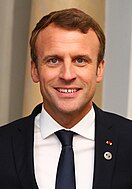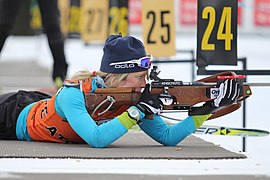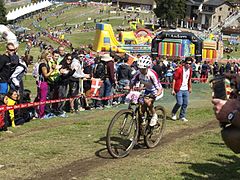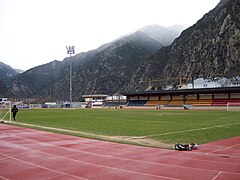Andorra
Principality of Andorra Principat d'Andorra (Catalan) | |
|---|---|
| Motto: Virtus Unita Fortior (Latin) "United virtue is stronger"[1] | |
| Anthem: "El Gran Carlemany" (in Catalan) "The Great Charlemagne" | |
 Location of Andorra (centre of green circle) in Europe (dark grey) | |
| Capital and largest city | Andorra la Vella 42°30′23″N 1°31′17″E / 42.50639°N 1.52139°E |
| Official languages | Catalan[2] |
| Ethnic groups (2021[3]) |
|
| Religion (2020)[4] |
|
| Demonym(s) | Andorran |
| Government | Unitary parliamentary diarchic constitutional co-principality |
| Xavier Espot Zamora | |
| Carles Enseñat Reig | |
| Legislature | General Council |
| Independence | |
• From the Crown of Aragon | 8 September 1278[6][7] |
• From the Kingdom of France | October 12, 1652 |
• From the French Empire | 1814 |
| 2 February 1993 | |
| Area | |
• Total | 467.63 km2 (180.55 sq mi) (178th) |
• Water (%) | 0.26 (121.4 ha)[a] |
| Population | |
• 2023 estimate | |
• Density | 179.8/km2 (465.7/sq mi) (71st) |
| GDP (PPP) | 2024 estimate |
• Total | |
• Per capita | |
| GDP (nominal) | 2024 estimate |
• Total | |
• Per capita | |
| Gini (2003) | 27.21[b] low inequality |
| HDI (2022) | very high (35th) |
| Currency | Euro (€)[c] (EUR) |
| Time zone | UTC+01 (CET) |
• Summer (DST) | UTC+02 (CEST) |
| Date format | dd/mm/yyyy |
| Drives on | Right[13] |
| Calling code | +376 |
| ISO 3166 code | AD |
| Internet TLD | .ad[d] |
Andorra,[e] officially the Principality of Andorra,[2][f] is a sovereign landlocked country on the Iberian Peninsula, in the eastern Pyrenees in Western Europe, bordered by France to the north and Spain to the south. Believed to have been created by Charlemagne, Andorra was ruled by the count of Urgell until 988, when it was transferred to the Roman Catholic Diocese of Urgell. The present principality was formed by a charter in 1278. It is currently headed by two co-princes: the Bishop of Urgell in Catalonia, Spain, and the president of France. Its capital and largest city is Andorra la Vella.
Andorra is the sixth-smallest state in Europe, with an area of 468 square kilometres (181 sq mi) and a population of approximately 79,034.[15][16] The Andorran people are a Romance ethnic group closely related to Catalans.[17] Andorra is the world's 16th-smallest country by land and 11th-smallest by population.[18] Its capital, Andorra la Vella, is the highest capital city in Europe, at an elevation of 1,023 metres (3,356 feet) above sea level.[19] The official language is Catalan, but Spanish, Portuguese, and French are also commonly spoken.[3][20]
Tourism in Andorra brings approximately 8 million visitors to the country annually.[21] Andorra is not a member state of the European Union. It has been a member of the United Nations since 1993.[22]
Etymology
[edit]The origin of the word Andorra is unknown, although several hypotheses have been proposed. The oldest is one put forward by the Greek historian Polybius (The Histories III, 35, 1), who describes the Andosins, an Iberian Pre-Roman tribe, as historically located in the valleys of Andorra and facing the Carthaginian army in its passage through the Pyrenees during the Punic Wars. The word Andosini or Andosins (Ἀνδοσίνοι) may derive from the Basque handia, meaning "big" or "giant".[23] The Andorran toponymy shows evidence of Basque language in the area. Another theory suggests that the word Andorra may derive from the old word Anorra that contains the Basque word ur ("water").[24]
Another theory suggests that Andorra may derive from Arabic ad-dārra (الدَّارَة), indicating a vast land which is located among mountains or a thickly wooded place[25] (with ad- being the definite article). When the Moors conquered the Iberian Peninsula, the valleys of the High Pyrenees were covered by large tracts of forest. These regions were not administered by Muslims, because of the geographic difficulty of direct rule.[26]
Other theories suggest that the term derives from the Navarro-Aragonese "andurrial", which means "land covered with bushes" or "scrubland".[27]
The folk etymology holds that Charlemagne had named the region as a reference to the Biblical Canaanite valley of Endor or Andor (where the Midianites had been defeated), a name bestowed by his heir and son Louis the Pious after defeating the Moors in the "wild valleys of Hell".[28]
History
[edit]Prehistory
[edit]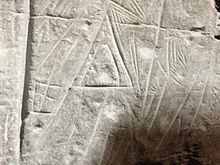
La Balma de la Margineda, found by archaeologists at Sant Julià de Lòria, was settled in 9,500 BCE as a passing place between the two sides of the Pyrenees. The seasonal camp was perfectly located for hunting and fishing by the groups of hunter-gatherers from Ariege and Segre.[29]
During the Neolithic, a group of people moved to the Valley of Madriu (the present-day Natural Park located in Escaldes-Engordany declared UNESCO World Heritage Site) as a permanent camp in 6640 BCE. The population of the valley grew cereals, raised domestic livestock, and developed commercial trade with people from Ségre and Occitania.[30][31]
Other archaeological deposits include the Tombs of Segudet (Ordino) and Feixa del Moro (Sant Julià de Lòria), both dated in 4900–4300 BCE as an example of the Urn culture in Andorra.[30][31] The model of small settlements began to evolve to complex urbanism during the Bronze Age. Metallurgical items of iron, ancient coins, and reliquaries can be found in the ancient sanctuaries scattered around the country.
The sanctuary of Roc de les Bruixes (Stone of the Witches) is perhaps the most important archeological complex of this age in Andorra, located in the parish of Canillo, about the rituals of funerals, ancient scripture and engraved stone murals.[32][31]
Iberian and Roman Andorra
[edit]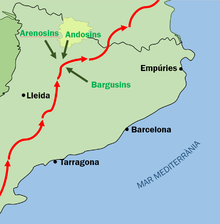
The inhabitants of the valleys were traditionally associated with the Iberians and historically located in Andorra as the Iberian tribe Andosins or Andosini (Ἀνδοσίνους) during the 7th and 2nd centuries BC. Influenced by the Aquitanian, Basque and Iberian languages, the locals developed some current toponyms. Early writings and documents relating to this group of people goes back to the second century BC by the Greek writer Polybius in his Histories during the Punic Wars.[33][34][31][35]
Some of the most significant remains of this era are the Castle of the Roc d'Enclar (part of the early Marca Hispanica),[36] l'Anxiu in Les Escaldes and Roc de L'Oral in Encamp.[31][35]
The presence of Roman influence is recorded from the 2nd century BCE to the 5th century CE. The places with the most Roman presence are in Camp Vermell (Red Field) in Sant Julià de Lòria, and in some places in Encamp and in the Roc d'Enclar. People continued trading, mainly with wine and cereals, with the Roman cities of Urgellet (the present-day La Seu d'Urgell) and across Segre through the via romana Strata Ceretana (also known as Strata Confluetana).[31][37][36]
Visigoths and Carolingians: the legend of Charlemagne
[edit]
After the fall of the Roman Empire, Andorra came under the influence of the Visigoths, the Kingdom of Toledo, and the Diocese of Urgell. The Visigoths remained in the valleys for 200 years, during which time Christianity spread. When the Muslim Empire of Al-Andalus replaced the ruling Visigoths in most of the Iberian Peninsula, Andorra was sheltered from these Arab invaders by the Franks.[38]
Tradition holds that Charles the Great (Charlemagne) granted a charter to the Andorran people for a contingent of 5,000 soldiers under the command of Marc Almugaver, in return for fighting against the Moors near Porté-Puymorens (Cerdanya).[39]
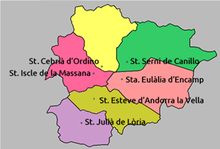
Andorra remained part of the Frankish Marca Hispanica, the buffer zone between the Frankish Empire and the Muslim territories, Andorra being part of the territory ruled by the Count of Urgell and eventually the bishop of the Diocese of Urgell. Tradition also holds that it was guaranteed by the son of Charlemagne, Louis the Pious, writing the Carta de Poblament or a local municipal charter c. 805.[40]
In 988, Count Borrell II of Urgell gave the Andorran valleys to the Diocese of Urgell in exchange for land in Cerdanya.[41] Since then, the bishop of Urgell, based in Seu d'Urgell, has been co-prince of Andorra.[42]
The first document that mentions Andorra as a territory is the Acta de Consagració i Dotació de la Catedral de la Seu d'Urgell (Deed of Consecration and Endowment of the Cathedral of La Seu d'Urgell). The document, dated 839, depicts the six old parishes of the Andorran valleys that made up the country's administrative division.[43]
Middle Ages: The Paréages and the founding of the Co-Principality
[edit]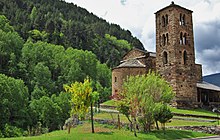
Before 1095, Andorra had no military protection, and the bishop of Urgell, who knew that the count of Urgell wanted to reclaim the Andorran valleys,[42] asked the Lord of Caboet for help and protection. In 1095, the lord of Caboet and the bishop of Urgell signed under oath a declaration of their co-sovereignty over Andorra. Arnalda de Caboet, daughter of Arnau of Caboet, married the viscount of Castellbò. Their daughter, Ermessenda de Castellbò,[44] married the count of Foix, Roger-Bernard II. Roger-Bernard II and Ermessenda shared rule over Andorra with the bishop of Urgell.
In the 13th century, a military dispute arose between the bishop of Urgell and the count of Foix as aftermath of the Cathar Crusade. The conflict was resolved in 1278 with the mediation of the king of Aragon, Peter III, between the bishop and the count, by the signing of the first paréage, which provided that Andorra's sovereignty be shared between the count of Foix[42] (whose title would ultimately transfer to the French head of state) and the bishop of Urgell, in Catalonia. This gave the principality its territory and political form.[43][45]
A second paréage was signed in 1288 after a dispute when the count of Foix ordered the construction of a castle in Roc d'Enclar.[43][45] The document was ratified by the noble notary Jaume Orig of Puigcerdà, and construction of military structures in the country was prohibited.[46][43]
In 1364, the political organization of the country named the figure of the syndic (now spokesman and president of the parliament) as representative of the Andorrans to their co-princes, making possible the creation of local departments (comuns, quarts and veïnats). After being ratified by Bishop Francesc Tovia and Count John I, the Consell de la Terra or Consell General de les Valls (General Council of the Valleys) was founded in 1419, the second oldest parliament in Europe. The syndic Andreu d'Alàs and the General Council organized the creation of the Justice Courts (La Cort de Justicia) in 1433 with the co-princes and the collection of taxes like foc i lloc (literally "fire and site", a national tax active since then).[47][38]
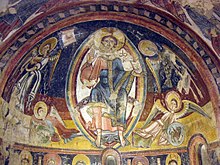
Although there are remains of ecclesiastical works dating before the 9th century (Sant Vicenç d'Enclar or Església de Santa Coloma), Andorra developed exquisite Romanesque Art during the 9th through 14th centuries, particularly in the construction of churches, bridges, religious murals and statues of the Virgin and Child (Our Lady of Meritxell being the most important).[38] Nowadays, the Romanesque buildings that form part of Andorra's cultural heritage stand out in a remarkable way, with an emphasis on Església de Sant Esteve, Sant Joan de Caselles, Església de Sant Miquel d'Engolasters, Sant Martí de la Cortinada and the medieval bridges of Margineda and Escalls among many others.[49][50]
The Catalan Pyrenees were embryonic of the Catalan language at the end of the 11th century. Andorra was influenced by this language, which was adopted locally decades before it expanded to the rest of the Crown of Aragon.[51]
The local economy during the Middle Ages was based on livestock, agriculture, furs and weavers. Later, at the end of the 11th century, the first iron foundries began to appear in Northern Parishes like Ordino, much appreciated by the master artisans who developed the art of the forges, an important economic activity in the country from the 15th century.[38]
16th to 18th centuries
[edit]
In 1601 the Tribunal de Corts (High Court of Justice) was created as a result of Huguenot rebellions in France, Inquisition courts coming from Spain and witchcraft-related beliefs native to the area, in the context of the Reformation and Counter-Reformation.[52][53][54]
With the passage of time, the co-title to Andorra passed to the kings of Navarre. After Henry III of Navarre became king of France, he issued an edict in 1607 that established the head of the French state and the bishop of Urgell as Co-Princes of Andorra, a political arrangement that still holds.
During 1617, communal councils form the sometent (popular militia or army) to deal with the rise of bandolerisme (brigandage) and the Consell de la Terra was defined and structured in terms of its composition, organization and competences current today.[55]
Andorra continued with the same economic system that it had during the 12th–14th centuries with a large production of metallurgy (fargues, a system similar to Farga Catalana) and with the introduction of tobacco circa 1692 and import trade. In 1371 and 1448, the co-princes ratified the fair of Andorra la Vella, the most important annual national festival commercially ever since.[56][57][58]
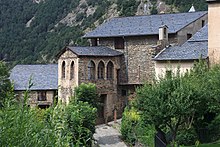
The country had a unique and experienced guild of weavers, Confraria de Paraires i Teixidors, in Escaldes-Engordany. Founded in 1604, it took advantage of the local thermal waters. By this time, the country was characterized by the social system of prohoms (wealthy society) and casalers (rest of the population with smaller economic acquisition), deriving from the tradition of pubilla and hereu.[60][61][62][63]
Three centuries after its foundation, the Consell de la Terra located its headquarters and the Tribunal de Corts in Casa de la Vall in 1702. The manor house built in 1580 served as a noble fortress of the Busquets family. Inside the parliament was placed the Closet of the six keys (Armari de les sis claus), representative of each Andorran parish, where the Andorran constitution and other documents and laws were later kept.[64][65]
In both the Reapers' War and the War of the Spanish Succession, the Andorran people (while professing to be a neutral country) supported the Catalans who saw their rights reduced in 1716. The reaction was the promotion of Catalan writings in Andorra, with cultural works such as the Book of Privileges (Llibre de Privilegis de 1674), Manual Digest (1748) by Antoni Fiter i Rossell or the Polità andorrà (1763) by Antoni Puig.[66][67]
19th century: the New Reform and the Andorran Question
[edit]
After the French Revolution, Napoleon I reestablished the Co-Principate in 1809 and removed the French medieval title. In 1812–1813, the First French Empire annexed Catalonia during the Peninsular War (Guerra Peninsular) and divided the region into four départements, with Andorra as a part of the district of Puigcerdà. In 1814, an imperial decree reestablished the independence and economy of Andorra.[68][69][70]
During this period, Andorra's late medieval institutions and rural culture remained largely unchanged. In 1866, the syndic Guillem d'Areny-Plandolit led the reformist group in a Council General of 24 members elected by suffrage limited to heads of families. The Council General replaced the aristocratic oligarchy that previously ruled the state.[71]
The New Reform (Nova Reforma) began after ratification by both Co-Princes and established the basis of the constitution[72] and symbols – such as the tricolour flag – of Andorra. A new service economy arose as a demand of the valley inhabitants and began to build infrastructure such as hotels, spa resorts, roads and telegraph lines.[73][74][75]

The authorities of the Co-Princes banned casinos and betting houses throughout the country. The ban resulted in an economic conflict and the Revolution of 1881, which began when revolutionaries assaulted the house of the syndic on 8 December 1880, and established the Provisional Revolutionary Council led by Joan Pla i Calvo and Pere Baró i Mas. The Provisional Revolutionary Council allowed for the construction of casinos and spas by foreign companies.[77] From 7 to 9 June 1881, the loyalists of Canillo and Encamp reconquered the parishes of Ordino and La Massana by establishing contact with the revolutionary forces in Escaldes-Engordany.[78] After a day of combat the Treaty of the Bridge of Escalls was signed on 10 June.[79][80][81] The council was replaced and new elections were held. The economic situation worsened, as the populace was divided over the Qüestió d'Andorra – the "Andorran Question" in relation to the Eastern Question.[82] The struggles continued between pro-bishops, pro-French, and nationalists based on the troubles of Canillo in 1882 and 1885.[83][84][85]
Andorra participated in the cultural movement of the Catalan Renaixença. Between 1882 and 1887, the first academic schools were formed where trilingualism coexisted with the official language, Catalan. Romantic authors from France and Spain reported the awakening of the national consciousness of the country. Jacint Verdaguer lived in Ordino during the 1880s where he wrote and shared works related to the Renaixença with writer and photographer Joaquim de Riba.
In 1848, Fromental Halévy had premiered the opera Le val d'Andorre to great success in Europe, where the national consciousness of the valleys was exposed in the romantic work during the Peninsular War.[86][87][88]
20th and 21st century: Modernisation of the country and constitutional Andorra
[edit]
In 1933 France occupied Andorra following social unrest which occurred before elections due to the Revolution of 1933 and the FHASA strikes (Vagues de FHASA); the revolt led by Joves Andorrans (a labour union group related to the Spanish CNT and FAI) called for political reforms,[89] the universal suffrage vote of all Andorrans and acted in defense of the rights of local and foreign workers during the construction of FHASA's hydroelectric power station in Encamp.[90] On 5 April 1933 Joves Andorrans seized the Andorran Parliament.[91] These actions were preceded by the arrival of Colonel René-Jules Baulard with 50 gendarmes and the mobilization of 200 local militias or sometent led by the Síndic Francesc Cairat.[92]
On 6 July 1934, adventurer and nobleman Boris Skossyreff, with his promise of freedoms and modernization of the country and wealth through the establishment of a tax haven and foreign investments, received the support of the members of the General Council to proclaim himself the sovereign of Andorra. On 8 July 1934 Boris issued a proclamation in Urgell, declaring himself Boris I, King of Andorra,[93] simultaneously declaring war on the Bishop of Urgell and approving the King's constitution on 10 July.[94] He was arrested by the Co-Prince and Bishop Justí Guitart i Vilardebó and their authorities on 20 July and ultimately expelled from Spain.[95] From 1936 until 1940, a French military detachment of Garde Mobile led by well-known Colonel René-Jules Baulard was garrisoned in Andorra to secure the principality against disruption from the Spanish Civil War[96] and Francoist Spain[97] and also face the rise of Republicanism in the aftermath of the 1933 Revolution.[98] During the Spanish Civil War, the inhabitants of Andorra welcomed refugees from both sides, and many of them settled permanently in the country thus contributing to the subsequent economic boom and the entry into the capitalist era of Andorra.[99][100] Francoist troops reached the Andorran border in the later stages of the war.[101]

During World War II, Andorra remained neutral and was an important smuggling route between Vichy France and Francoist Spain.[103] Many Andorrans criticized the passivity of the General Council for impeding both the entry and expulsion of foreigners and refugees, committing economic crimes,[104] reducing the rights of citizens[105] and sympathy with Francoism.[106][107] General Council members justified the council's political and diplomatic actions as necessary for Andorra's survival and the protection of its sovereignty. Andorra was relatively unscathed by the two world wars and the Spanish Civil War.[107][108] Certain groups formed to help victims of oppression in Nazi-occupied countries, while participating in smuggling to help Andorra survive. Among the most prominent was the Hostal Palanques Evasion Network Command, which, in contact with the British MI6, helped almost 400 fugitives,[109] among whom were Allied military personnel.[110][111] The Command remained active between 1941 and 1944, although there were struggles with pro-Axis informers and Gestapo agents in Andorra.[112]

In the capital city there was a smuggling black market of propaganda, culture and cinematic art not favorable to totalitarian regimes, promulgated in such places as the Hotel Mirador or the Casino Hotel,[113] as a meeting place for Free French forces and a route for escorting crashed Allied pilots out of Europe.[114] The network was maintained after the war, when film societies were formed, where movies, music and books censored in Franco's Spain were imported, becoming an anti-censorship attraction for the Catalan or foreign public even within Andorra.[100] Andorran Group (Agrupament Andorrà), an anti-fascist organization linked to the Occitanie's French Resistance, accused the French representative (veguer) of collaboration with Nazism.[115]
The Andorran opening to the capitalist economy resulted in two axes: mass tourism and the country's tax exemption. The first steps toward the capitalist boom date from the 1930s, with the construction of FHASA[116] and the creation of professional banking[117] with Banc Agrícol (1930) and Crèdit Andorrà (1949), later with Banca Mora (1952), Banca Cassany (1958) and SOBANCA (1960). Shortly after, activities such as skiing and shopping become a tourist attraction, with the inauguration of ski resorts and cultural entities in the late 1930s.[116][118] All in all, a renovated hotel industry has developed. In April 1968 a social health insurance system was created (CASS).[119]
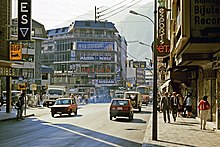

The Andorran government necessarily involved planning, projection and forecasts for the future: with the official visit of the French co-prince Charles de Gaulle in 1967 and 1969, it was given approval for the economic boom and national demands within the framework of human rights and international openness.[122][123]
Andorra experienced an era commonly known as the "Andorran dream"[124] (similar to the American Dream) along with the Trente Glorieuses: the mass culture rooted the country experiencing radical changes in the economy and culture. Proof of this was Ràdio Andorra, the top musical radio station in Europe in this period,[125] with guests and speakers of great importance promoting musical hits of chanson française, swing, rhythm & blues, jazz, rock and roll and American country music.[126] During this period Andorra achieved a GDP per capita and a life expectancy higher than the most standard countries of the current economy.[116][127]
Given its relative isolation, Andorra has existed outside the mainstream of European history, with few ties to countries other than France, Spain and Portugal. But in recent times its thriving tourist industry, along with developments in transport and communications, have removed the country from its isolation. Since 1976 the country has seen the need to reform Andorran institutions due to anachronisms in sovereignty, human rights and the balance of powers as well as the need to adapt legislation to modern demands. In 1982 a first separation of powers took place when instituting the Govern d'Andorra, under the name of the executive board (Consell Executiu), chaired by the first prime minister Òscar Ribas Reig with the co-princes' approval.[128] In 1989 the Principality signed an agreement with the European Economic Community to regularize trade relations.[129]
Its political system was modernized in 1993 after the Andorran constitutional referendum, when the constitution was drafted by the co-princes and the General Council and approved on 14 March[130] by 74.2% of voters, with a 76% turnout.[131] The first elections under the new constitution were held later in the year.[130] The same year, Andorra became a member of the United Nations and the Council of Europe.[132]
Andorra formalized diplomatic relations with the United States in 1996, participating in the 51st UN General Assembly. First General Syndic Marc Forné took part in a speech in Catalan in the General Assembly to defend the reform of the organization, and after three days he took part in the Parliamentary Assembly of the Council of Europe to defend Andorra's linguistic rights and economy.[133] In 2006 a monetary agreement with the European Union was formalized that allows Andorra to use the euro officially, as well as minting its own euro coins.[134][135]
Politics
[edit]Andorra is a parliamentary co-principality with the bishop of Urgell and the president of France as co-princes.[136] This peculiarity makes the president of France, in his capacity as prince of Andorra, an elected monarch, although he is not elected by a popular vote of the Andorran people. The politics of Andorra take place in a framework of a parliamentary representative democracy with a unicameral legislature, and of a pluriform multi-party system. The prime minister is the chief executive.
The current prime minister is Xavier Espot Zamora of the Democrats for Andorra (DA). Executive power is exercised by the government. Legislative power is vested in both government and parliament.
The Parliament of Andorra is known as the General Council. The General Council consists of between 28 and 42 councillors.[136] The councillors serve for four-year terms, and elections are held between the 30th and 40th days following the dissolution of the previous Council.
Half are elected in equal numbers by each of the seven administrative parishes, and the other half of the councillors are elected in a single national constituency. Voters vote for parties, not candidates; a voter votes for a party for the parish councillors and a party for the at-large councilors, and the winners come from party lists. Fifteen days after the election, the councillors hold their inauguration. During this session, the General Syndic, who is the head of the General Council, and the Subsyndic General, his assistant, are elected. Eight days later, the Council convenes once more. During this session, the prime minister is chosen from among the councillors.
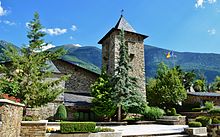
Candidates can be proposed by a minimum of one-fifth of the councillors. The Council then elects the candidate with the absolute majority of votes to be prime minister. The Syndic General then notifies the co-princes, who in turn appoint the elected candidate as the prime minister of Andorra. The General Council is also responsible for proposing and passing laws. Bills may be presented to the council as Private Members' Bills by three of the local Parish Councils jointly or by at least one tenth of the citizens of Andorra.

The council also approves the annual budget of the principality. The government must submit the proposed budget for parliamentary approval at least two months before the previous budget expires. If the budget is not approved by the first day of the next year, the previous budget is extended until a new one is approved. Once any bill is approved, the Syndic General is responsible for presenting it to the co-princes so that they may sign and enact it.
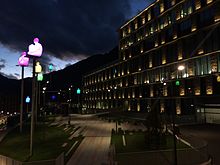
If the prime minister is not satisfied with the council, he may request that the co-princes dissolve the council and order new elections. In turn, the councillors have the power to remove the prime minister from office. After a motion of censure is approved by at least one-fifth of the councillors, the council will vote and if it receives the absolute majority of votes, the prime minister is removed.[citation needed]
Law and criminal justice
[edit]The judiciary is composed of the Magistrates Court, the Criminal Law Court, the High Court of Andorra, and the Constitutional Court. The High Court of Justice is composed of five judges: one appointed by the prime minister, one each by the co-princes, one by the Syndic General, and one by the judges and magistrates. It is presided over by the member appointed by the Syndic General and the judges hold office for six-year terms.[137]
The magistrates and judges are appointed by the High Court, as is the president of the Criminal Law Court. The High Court also appoints members of the Office of the Attorney General. The Constitutional Court is responsible for interpreting the Constitution and reviewing all appeals of unconstitutionality against laws and treaties. It is composed of four judges, one appointed by each of the co-princes and two by the General Council. They serve eight-year terms. The Court is presided over by one of the judges on a two-year rotation so that each judge at one point will preside over the Court.
Foreign relations, defence and security
[edit]
Andorra does not have its own armed forces,[3] although there is a small ceremonial army. Responsibility for defending the nation rests primarily with France and Spain.[138] However, in case of emergencies or natural disasters, the Sometent (an alarm) is called and all able-bodied men between 21 and 60 of Andorran nationality must serve.[139][140] This is why all Andorrans, and especially the head of each house (usually the eldest able-bodied man of a house) should, by law, keep a rifle, even though the law also states that the police will offer a firearm in case of need.[140] Andorra is a full member of the United Nations (UN), the Organization for Security and Co-operation in Europe (OSCE), and has a special agreement with the European Union (EU). After the constitution was ratified, Andorra would later establish diplomatic relations with their major allies aside from neighbours France and Spain such as the United Kingdom in 1994 and the United States in 1995. It also has observer status at the World Trade Organization (WTO).[141] On 16 October 2020, Andorra became the 190th member of the International Monetary Fund (IMF), during the COVID-19 pandemic.[142][143]
Military
[edit]Andorra has a small army, which has historically been raised or reconstituted at various dates, but has never in modern times amounted to a standing army. The basic principle of Andorran defence is that all able-bodied men are available to fight if called upon by the summoning of the Sometent (a civil defense organization of Andorra, made up of the heads of households). The Sometent was used sparingly against French "Lutheran" raids during the late 16th century. Being a landlocked country, Andorra has no navy.
Before World War I, Andorra maintained an armed militia force of about 600 part-time militiamen under the supervision of a Captain (Capità or Cap de Sometent) and a Lieutenant (Desener or Lloctinent del Capità). This body was not liable for service outside the principality and was commanded by two officials (veguers) appointed by France and the Bishop of Urgell.[144]
In the modern era, the army has consisted of a very small body of volunteers willing to undertake ceremonial duties. Uniforms and weaponry were handed down from generation to generation within families and communities.[145]
The army's role in internal security was largely taken over by the formation of the Police Corps of Andorra in 1931. Brief civil disorder associated with the elections of 1933 led to assistance being sought from the French National Gendarmerie,[146] with a detachment resident in Andorra for two months under the command of René-Jules Baulard.[citation needed] The Andorran Police was reformed in the following year, with eleven soldiers appointed to supervisory roles.[147] The force consisted of six corporals, one for each parish (although there are currently seven parishes, there were only six until 1978), plus four junior staff officers to co-ordinate action, and a commander with the rank of major. It was the responsibility of the six corporals, each in his own parish, to be able to raise a fighting force from among the able-bodied men of the parish.
The only permanent section of the present-day Sometent is a twelve-man ceremonial unit. However, all able-bodied men are technically available for military service,[148] with a requirement for each family to have access to a firearm. An area weapon such as a shotgun per household is unregulated; however, ranged weapons such as pistols and rifles require a license.[145] The army has not fought for more than 700 years, and its main responsibility is to present the flag of Andorra at official ceremonial functions.[149][150] According to Marc Forné Molné, Andorra's military budget is strictly from voluntary donations, and the availability of full-time volunteers.[151]
The only more recent general emergency call to the Sometent was given during the floods of 1982 in the Catalan Pyrenees (when 12 Andorran citizens perished),[152] to help the population and establish a public order along with the local police units.[153]
Police Corps
[edit]
Andorra maintains a small but modern and well-equipped internal police force, with around 240 police officers supported by civilian assistants. The principal services supplied by the corps are uniformed community policing, criminal detection, border control, and traffic policing. There are also small specialist units including police dogs, mountain rescue, and a bomb disposal team.[154]
GIPA
[edit]The Grup d'Intervenció Policia d'Andorra' (GIPA) is a small special forces squad trained in counter-terrorism, and hostage recovery tasks. Although it is the closest in style to an active military force, it is part of the Police Corps, and not the army. As terrorist and hostage situations are a rare threat to the country, the GIPA is commonly assigned to prisoner escort duties, and at other times to routine policing.[155]
Fire brigade
[edit]The Andorran Fire Brigade, with headquarters at Santa Coloma, operates from four modern fire stations, and has a staff of around 120 firefighters. The service is equipped with 16 heavy appliances (fire tenders, turntable ladders, and specialist four-wheel drive vehicles), four light support vehicles (cars and vans) and four ambulances.[156]
Historically, the families of the six ancient parishes of Andorra maintained local arrangements to assist each other in fighting fires. The first fire pump purchased by the government was acquired in 1943. Serious fires which lasted for two days in December 1959 led to calls for a permanent fire service, and the Andorran Fire Brigade was formed on 21 April 1961.[157]
The fire service maintains full-time cover with five fire crews on duty at any time: two at the brigade's headquarters in Santa Coloma, and one crew at each of the other three fire stations.[158]
Geography
[edit]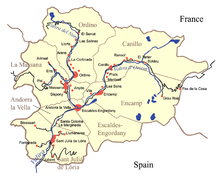
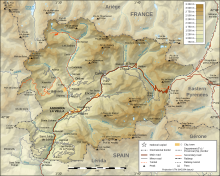
Parishes
[edit]Andorra consists of seven parishes:
Physical geography
[edit]Due to its location in the eastern Pyrenees mountain range, Andorra consists predominantly of rugged mountains, the highest being the Coma Pedrosa at 2,946 metres (9,665 ft), and the average elevation of Andorra is 1,996 metres (6,549 ft).[159] These are dissected by three narrow valleys in a Y shape that combine into one as the main stream, the Gran Valira river, leaves the country for Spain (at Andorra's lowest point of 840 m or 2,756 ft). Andorra's land area is 468 km2 (181 sq mi).
Environment
[edit]Phytogeographically, Andorra belongs to the Atlantic European province of the Circumboreal Region within the Boreal Kingdom. According to the WWF, the territory of Andorra belongs to the ecoregion of Pyrenees conifer and mixed forests.[160] Andorra had a 2018 Forest Landscape Integrity Index mean score of 4.45/10, ranking it 127th globally out of 172 countries.[161] In Andorra forest cover is around 34% of the total land area, equivalent to 16,000 hectares (ha) of forest in 2020, which was unchanged from 1990. In 2020, naturally regenerating forest covered 16,000 hectares (ha) and planted forest covered 0 hectares (ha). Of the naturally regenerating forest 0% was reported to be primary forest (consisting of native tree species with no clearly visible indications of human activity) and around 0% of the forest area was found within protected areas.[162][163]
Important Bird Area
[edit]The whole country has been recognised as a single Important Bird Area (IBA) by BirdLife International, because it is important for forest and mountain birds and supports populations of red-billed choughs, citril finches and rock buntings.[164]
Climate
[edit]Andorra has alpine, continental and oceanic climates, depending on altitude. Its higher elevation means there is, on average, more snow in winter and it is slightly cooler in summer. The diversity of landmarks, the different orientation of the valleys and the irregularity relief typical of the Mediterranean climates make the country have a great diversity of microclimates that hinder the general dominance of the high mountain climate. The great differences of altitude in the minimum and maximum points, together with the influence of a Mediterranean climate, develop the climate of the Andorran Pyrenees.
When in precipitation, a global model characterized by convective and abundant rains can be defined during spring and summer, which can last until autumn (May, June and August are usually the rainiest months). In winter, however, it is less rainy, except in the highlands, subject to the influence of fronts from the Atlantic, which explains the great amount of snowfall in the Andorran mountains. The temperature regime is characterized, broadly, by a temperate summer and a long and cold winter, in accordance with the mountainous condition of the Principality.[165]
| Climate data for Andorra La Vella (Roc de Sant Pere), elevation: 1,075m (1971–2000, extremes 1934–present) | |||||||||||||
|---|---|---|---|---|---|---|---|---|---|---|---|---|---|
| Month | Jan | Feb | Mar | Apr | May | Jun | Jul | Aug | Sep | Oct | Nov | Dec | Year |
| Record high °C (°F) | 18.0 (64.4) |
20.0 (68.0) |
24.8 (76.6) |
29.0 (84.2) |
29.2 (84.6) |
37.4 (99.3) |
39.0 (102.2) |
35.9 (96.6) |
32.0 (89.6) |
31.0 (87.8) |
21.2 (70.2) |
19.0 (66.2) |
39.0 (102.2) |
| Mean daily maximum °C (°F) | 6.9 (44.4) |
8.9 (48.0) |
11.7 (53.1) |
13.3 (55.9) |
17.6 (63.7) |
21.9 (71.4) |
26.2 (79.2) |
25.4 (77.7) |
21.4 (70.5) |
16.0 (60.8) |
10.7 (51.3) |
7.5 (45.5) |
15.6 (60.1) |
| Daily mean °C (°F) | 2.2 (36.0) |
3.5 (38.3) |
5.8 (42.4) |
7.5 (45.5) |
11.5 (52.7) |
15.4 (59.7) |
18.8 (65.8) |
18.5 (65.3) |
14.9 (58.8) |
10.3 (50.5) |
5.7 (42.3) |
3.0 (37.4) |
9.8 (49.6) |
| Mean daily minimum °C (°F) | −2.5 (27.5) |
−1.8 (28.8) |
−0.2 (31.6) |
1.7 (35.1) |
5.3 (41.5) |
8.8 (47.8) |
11.4 (52.5) |
11.4 (52.5) |
8.5 (47.3) |
4.7 (40.5) |
0.6 (33.1) |
−1.4 (29.5) |
3.9 (39.0) |
| Record low °C (°F) | −15 (5) |
−16 (3) |
−11 (12) |
−7 (19) |
−2 (28) |
0.0 (32.0) |
3.0 (37.4) |
2.0 (35.6) |
0.0 (32.0) |
−6 (21) |
−10.5 (13.1) |
−13 (9) |
−16 (3) |
| Average precipitation mm (inches) | 53.1 (2.09) |
37.9 (1.49) |
40.5 (1.59) |
71.2 (2.80) |
89.8 (3.54) |
84.2 (3.31) |
60.7 (2.39) |
85.6 (3.37) |
80.9 (3.19) |
72.4 (2.85) |
68.4 (2.69) |
67.9 (2.67) |
812.3 (31.98) |
| Source 1: ACDA[166] | |||||||||||||
| Source 2: Meteo Climat (record highs and lows)[167] | |||||||||||||
As a small mountainous country, Andorra is highly vulnerable to climate change. Temperatures in its high-altitude regions have risen by about 0.17°C per decade, while annual rainfall has decreased by 49 mm. These shifts are impacting water resources and snow cover, which are key elements for Andorra's tourism-driven economy.[168] The number of days with enough snow for skiing is declining, and the snow line is retreating to higher altitudes.[169]
Although it's national greenhouse gas emissions are one of the lowest in the world (534 thousand tonnes emitted in 2023),[170] Andorra has a strong climate change mitigation strategy, with a focus on renewable energy and energy efficiency. In its Nationally Determined Contribution, Andorra has committed to reducing its emissions by 55% by 2030, and to carbon neutrality by 2050.[171] However, the adaptation part of the strategy is still in early stages and may be difficult and costly to implement. Given the country's reliance on tourism, speeding up adaptation is essential for building a more resilient economy.[172]
Economy
[edit]Tourism, the mainstay of Andorra's economy, accounts for roughly 80% of GDP. An estimated 8 million tourists visit annually,[21] attracted by Andorra's duty-free status and by its summer and winter resorts.
One of the main sources of income in Andorra is from ski resorts, which total over 175 km (109 mi) of ski grounds. The sport brings in over 7 million visitors annually and an estimated 340 million euros per year, sustaining 2,000 direct and 10,000 indirect jobs at present since 2007.[173]
The banking sector, with its tax haven status, also contributes substantially to the economy with revenues raised exclusively through import tariffs (the financial and insurance sector accounts for approximately 19% of GDP[174]). However, during the European sovereign-debt crisis of the 21st century, the tourist industry suffered a decline, partly caused by a drop in the prices of goods in Spain, undercutting duty-free shopping and increasing unemployment. On 1 January 2012, a business tax of 10% was introduced,[175] followed by a sales tax of 2% a year later, which raised just over 14 million euros in its first quarter.[176]
Agricultural production is limited; only 1.7%[177] of the land is arable, and most food has to be imported. Some tobacco is grown locally. The principal livestock activity is domestic sheep raising. Manufacturing output consists mainly of cigarettes, cigars, and furniture. Andorra's natural resources include hydroelectric power, mineral water, timber, iron ore, and lead.[3]
Andorra is not a member of the European Union, but enjoys a special relationship with it, such as being treated as an EU member for trade in manufactured goods (no tariffs) and as a non-EU member for agricultural products. Andorra lacked a currency of its own and used both the French franc and the Spanish peseta in banking transactions until 31 December 1999, when both currencies were replaced by the EU's single currency, the euro. Coins and notes of both the franc and the peseta remained legal tender in Andorra until 31 December 2002. Andorra negotiated to issue its own euro coins, beginning in 2014.
Andorra has historically had one of the world's lowest unemployment rates. In 2023 it stood at 1.5%.[178]
On 31 May 2013, it was announced that Andorra intended to legislate for the introduction of an income tax by the end of June, against a background of increasing dissatisfaction with the existence of tax havens among EU members.[179] The announcement was made following a meeting in Paris between the Prime Minister Antoni Martí and the French President and Prince of Andorra François Hollande. Hollande welcomed the move as part of a process of Andorra "bringing its taxation in line with international standards".[180]
By the mid-2010s, the financial system comprised five banking groups,[181] one specialised credit entity, eight investment undertaking management entities, three asset management companies, and 29 insurance companies, 14 of which are branches of foreign insurance companies authorised to operate in the principality.[174] The last mergers between banks took place in 2022, bringing the Andorran financial sector to currently have 3 active banking groups.[182]
Demographics
[edit]
Population
[edit]| Year | Pop. | ±% p.a. |
|---|---|---|
| 1950 | 6,176 | — |
| 1960 | 8,392 | +3.11% |
| 1970 | 19,545 | +8.82% |
| 1980 | 35,460 | +6.14% |
| 1990 | 54,507 | +4.39% |
| 2000 | 65,844 | +1.91% |
| 2010 | 85,015 | +2.59% |
| 2015 | 78,014 | −1.70% |
| Source: Departament d'Estadística d'Andorra[183] | ||
The population of Andorra is estimated at 79,034 (2021).[15][16] The Andorrans are a Romance ethnic group of originally Catalan descent.[17] The population has grown from 5,000 in 1900.
Two-thirds of residents lack Andorran nationality and do not have the right to vote in communal elections. Moreover, they are not allowed to be elected as prime minister[184] or to own more than 33% of the capital stock of a privately held company.[185][186][187][188]
The largest national groups in Andorra are Spanish (34.3%), Andorrans (32.1%), Portuguese (10%), and French (5.6%). The remaining 18% of the population includes British, Dutch, Germans, Italians and other Europeans, as well as Argentinians, Chileans, Indians, Moroccans and Uruguayans.[21]
Languages
[edit]| Language | Speakers |
|---|---|
| Catalan | |
| Spanish | |
| Portuguese | |
| French | |
| Other |
The historic and official language is Catalan, a Romance language. The Andorran government encourages the use of Catalan. It funds a Commission for Catalan Toponymy in Andorra (Catalan: Comissió de Toponímia d'Andorra), and provides free Catalan classes to assist immigrants. Andorran television and radio stations use Catalan.
Because of immigration, historical links, and close geographic proximity, Spanish, Portuguese and French are commonly spoken. Most Andorran residents can speak one or more of these, in addition to Catalan. English is less commonly spoken among the general population, though it is understood to varying degrees in the major tourist resorts.[citation needed] Andorra is one of only four European countries (together with France, Monaco, and Turkey)[190] that have never signed the Council of Europe Framework Convention on National Minorities.[191]
Religion
[edit]Few official statistics are available on religion; estimates of the Catholic population in 2020 range from 89.5%[192] to 99.21%.[193] The patron saint is Our Lady of Meritxell. There are also members of various Protestant denominations and small numbers of Hindus, and Bahá'ís,[194][195] In 2022 there were approximately 2000 Muslims and roughly 100 Jews.[196][197]
Largest cities
[edit]| Rank | Name | Parishes of Andorra | Pop. | ||||||
|---|---|---|---|---|---|---|---|---|---|
 Andorra la Vella  Escaldes-Engordany |
1 | Andorra la Vella | Andorra la Vella | 19,383 |  Sant Julià de Lòria  Encamp | ||||
| 2 | Escaldes-Engordany | Escaldes-Engordany | 14,599 | ||||||
| 3 | Sant Julià de Lòria | Sant Julià de Lòria | 7,636 | ||||||
| 4 | Encamp | Encamp | 7,575 | ||||||
| 5 | La Massana | La Massana | 5,353 | ||||||
| 6 | Santa Coloma | Andorra la Vella | 3,057 | ||||||
| 7 | Ordino | Ordino | 3,034 | ||||||
| 8 | Canillo | Canillo | 2,213 | ||||||
| 9 | El Pas de la Casa | Encamp | 1,943 | ||||||
| 10 | Arinsal | La Massana | 1,641 | ||||||
Education
[edit]The Qualified Education Law (Ilei qualificada d'educacio) of Andorra was passed in 1993. It guarantees free, public education from age four until the end of compulsory schooling.[198]
Schools
[edit]Children between the ages of 6 and 16 are required by law to have full-time education.[198] Education up to secondary level is provided free of charge by the government.
There are three systems of school, Andorran, French and Spanish, which use Catalan, French and Spanish languages respectively, as the main language of instruction. Parents may choose which system their children attend. All schools are built and maintained by Andorran authorities, but teachers in the French and Spanish schools are paid for the most part by France and Spain. 39% of Andorran children attend Andorran schools, 33% attend French schools, and 28% Spanish schools.
University of Andorra
[edit]The Universitat d'Andorra (UdA) is the state public university and is the only university in Andorra. It was established in 1997. The university provides first-level degrees in nursing, computer science, business administration, and educational sciences, in addition to higher professional education courses. The only two graduate schools in Andorra are the Nursing School and the School of Computer Science, the latter having a PhD programme.
Virtual Studies Centre
[edit]The geographical complexity of the country as well as the small number of students prevents the University of Andorra from developing a full academic programme, and it serves principally as a centre for virtual studies, connected to Spanish and French universities. The Virtual Studies Centre (Centre d'Estudis Virtuals) at the university runs approximately 20 different academic degrees at both undergraduate and postgraduate levels in fields including tourism, law, Catalan philology, humanities, psychology, political sciences, audiovisual communication, telecommunications engineering, and East Asia studies. The centre also runs various postgraduate programmes and continuing-education courses for professionals.
Transport
[edit]
Until the 20th century, Andorra had very limited transport links to the outside world, and development of the country was affected by its physical isolation. Even now, the nearest major airports at Toulouse and Barcelona are both three hours' drive from Andorra.
Andorra has a road network of 279 km (173 mi), of which 76 km (47 mi) is unpaved. The two main roads out of Andorra la Vella are the CG-1 to the Spanish border near Sant Julià de Lòria, and the CG-2 to the French border via the Envalira Tunnel near El Pas de la Casa.[199] Bus services cover all metropolitan areas and many rural communities, with services on most major routes running half-hourly or more frequently during peak travel times. There are frequent long-distance bus services from Andorra to Barcelona and Toulouse, plus a daily tour from the former city. Bus services mostly are run by private companies, but some local ones are operated by the government.

There are no airports for fixed-wing aircraft within Andorra's borders but there are, however, heliports in La Massana (Camí Heliport), Arinsal and Escaldes-Engordany with commercial helicopter services[200][201] and an airport located in the neighbouring Spanish comarca of Alt Urgell, 12 kilometres (7.5 miles) south of the Andorran-Spanish border.[202] Since July 2015, Andorra–La Seu d'Urgell Airport has operated commercial flights to Madrid and Palma de Mallorca, and is the main hub for Andorra Airlines.
Nearby airports located in Spain and France provide access to international flights for the principality. The nearest airports are at Perpignan, France (156 kilometres or 97 miles from Andorra) and Lleida, Spain (160 kilometres or 99 miles from Andorra). The largest nearby airports are at Toulouse, France (165 kilometres or 103 miles from Andorra) and Barcelona, Spain (215 kilometres or 134 miles from Andorra). There are hourly bus services from both Barcelona and Toulouse airports to Andorra.
The nearest railway station is Andorre-L'Hospitalet station 10 km (6 mi) east of Andorra which is on the 1,435 mm (4 ft 8+1⁄2 in)-gauge line from Latour-de-Carol (25 km or 16 mi) southeast of Andorra, to Toulouse and on to Paris by the French high-speed trains. This line is operated by the SNCF. Latour-de-Carol has a scenic 1,000 mm (3 ft 3+3⁄8 in) metre gauge trainline to Villefranche-de-Conflent, as well as the SNCF's 1,435 mm gauge line connecting to Perpignan, and the Renfe's 1,668 mm (5 ft 5+21⁄32 in) -gauge line to Barcelona.[203][204] There are also direct Intercités de Nuit trains between L'Hospitalet-près-l'Andorre and Paris on certain dates.[205]
Media and telecommunications
[edit]

In Andorra, mobile and fixed telephone and internet services are operated exclusively by the Andorran national telecommunications company, SOM, also known as Andorra Telecom (STA). The same company also manages the technical infrastructure for national broadcasting of digital television and radio.[206] In 2010 Andorra became the first country to provide a direct optical fiber link to all homes (FTTH) and businesses.[207]
The first commercial radio station to broadcast was Radio Andorra, which was active from 1939 to 1981.[208][209][210] On 12 October 1989, the General Council established radio and television as essential public services creating and managing the entity ORTA, becoming on 13 April 2000, in the public company Ràdio i Televisió d'Andorra (RTVA).[211] In 1990, the public radio was founded on the Radio Nacional d'Andorra. As an autochthonous television channel, there is only the national public television network Andorra Televisió, created in 1995.[212] Additional TV and radio stations from Spain and France are available via digital terrestrial television and IPTV.[213]
There are three national newspapers, Diari d'Andorra, El Periòdic d'Andorra, and Bondia as well as several local newspapers.[214] The history of the Andorran press begins in the period between 1917 and 1937 with the appearance of several periodicals papers such as Les Valls d'Andorra (1917), Nova Andorra (1932) and Andorra Agrícola (1933).[215] In 1974, the Poble Andorrà became the first regular newspaper in Andorra.[216] There is also an amateur radio society[217] and news agency ANA with independent management.[218]
Culture
[edit]Andorra is home to folk dances like the contrapàs and marratxa, which survive in Sant Julià de Lòria especially. Andorran folk music has similarities to the music of its neighbours, but is especially Catalan in character, especially in the presence of dances such as the sardana. Other Andorran folk dances include contrapàs in Andorra la Vella and Saint Anne's dance in Escaldes-Engordany. Andorra's national holiday is Our Lady of Meritxell Day, 8 September.[3]
Among the more important festivals and traditions are the Canólich Gathering in May, the Roser d'Ordino in July, the Meritxell Day (National Day of Andorra), the Andorra la Vella Fair, the Sant Jordi Day, the Santa Llúcia Fair, the Festivity from La Candelera to Canillo, the Carnival of Encamp, the sung of caramelles, the Festivity of Sant Esteve and the Festa del Poble.[219]
Andorra participated regularly in the Eurovision Song Contest between 2004 and 2009, being the only participating country presenting songs in Catalan.
In popular folklore, the best-known Andorran legends are the legend of Charlemagne, according to which this Frankish King would have founded the country, the White Lady of Auvinyà, the Buner d'Ordino, the legend of Engolasters Lake and the legend of Our Lady of Meritxell.
Andorran gastronomy is mainly Catalan, although it has also adopted other elements of French and Italian cuisines. The cuisine of the country has similar characteristics with the neighbours of Cerdanya and Alt Urgell, with whom it has strong cultural ties. Andorra's cuisine is marked by its nature as mountain valleys. Typical dishes of the country are quince all-i-oli, duck with winter pear, roast lamb with nuts, pork civet, massegada cake, escarole with pears, duck confit and mushrooms, escudella, spinach with raisins and pine nuts, jelly marmalade, stuffed murgues (mushrooms) with pork, dandelion salad, and Andorran river trout. To drink, mulled wine and beer are also popular.[220] Some of the dishes are very common in the mountainous regions of Catalonia, such as trinxat, embotits, cooked snails, rice with mushrooms, mountain rice and mató.[221]
Pre-Romanesque and Romanesque art are one of the most important artistic manifestations and characteristics of the Principality. The Romanesque one allows to know the formation of the parochial communities, the relations of (social and political) power and the national culture. There are a total of forty Romanesque churches that stand out as being small austere ornamentation constructions, as well as bridges, fortresses and manor houses of the same period.[222][223]
Summer solstice fire festivals in the Pyrenees was included as UNESCO Intangible cultural heritage in 2015.[224] Also the Madriu-Perafita-Claror Valley became Andorra's first, and to date its only, UNESCO World Heritage Site in 2004, with a small extension in 2006.[225][226]
-
Andorran flag on a balcony, Ordino
-
Women's Folk costume (Le val d'Andorre)
-
Men's Folk costume (Le val d'Andorre)
-
Grandalla flower, the national symbol
-
Altar of Sant Romà de Vila
Sports
[edit]Andorra is famous for its winter sports. Andorra has the largest territory of ski slopes in the Pyrenees (3100 hectares and about 350 km of slopes) and two ski resorts. Grandvalira is the largest and most popular resort. Other popular sports played in Andorra include football, rugby union, basketball, and roller hockey.
For roller hockey, Andorra usually plays in the CERH Euro Cup and FIRS Roller Hockey World Cup. In 2011, Andorra was the host country to the 2011 European League Final Eight.
The country is represented in association football by the Andorra national football team. The team gained its first competitive win in a European Championship qualifier on 11 October 2019, against Moldova.[227] Football is governed in Andorra by the Andorran Football Federation – founded in 1994, it organizes the national competitions of association football (Primera Divisió, Copa Constitució and Supercopa) and futsal. Andorra was admitted to UEFA and FIFA in the same year, 1996. FC Andorra, a club based in Andorra la Vella founded in 1942, compete in the Spanish football league system.
Rugby is a traditional sport in Andorra, mainly influenced by its popularity in southern France. The Andorra national rugby union team, nicknamed Els Isards, plays on the international stage in rugby union and rugby sevens.[228] VPC Andorra XV is a rugby team based in Andorra la Vella, which actually plays in the French championship.
Basketball's popularity has increased in the country since the 1990s, when the Andorran team BC Andorra played in the top league of Spain (Liga ACB).[229] After 18 years the club returned to the top league in 2014.[230]
Other sports practised in Andorra include cycling, volleyball, judo, Australian Rules football, handball, swimming, gymnastics, tennis, and motorsports. In 2012, Andorra raised its first national cricket team and played a home match against the Dutch Fellowship of Fairly Odd Places Cricket Club, the first match played in the history of Andorra at an altitude of 1,300 metres (4,300 ft).[231]
Andorra first participated at the Olympic Games in 1976. The country has appeared in every Winter Olympic Games since 1976. Andorra competes in the Games of the Small States of Europe, being twice the host country, in 1991 and 2005.
As one of the Catalan Countries, Andorra is home to a team of castellers, or Catalan human tower builders. The Castellers d'Andorra, based in the town of Santa Coloma d'Andorra, are recognized by the Coordinadora de Colles Castelleres de Catalunya, the governing body of castells.
-
The athletes from Andorra at the opening ceremonies of the 2010 Winter Olympics
-
Laure Soulié, Olympic biathlete
-
Laurent Recouderc serving at the 2010 French Open
-
Volta als Ports d'Andorra, the national road cycling tour
Tourism
[edit]Skiing, hiking, cross-country running, and cycling are all popular sports tourism activities in Andorra.[232] Andorra's economy is heavily built on tourism.[232]
Andorra generally enjoys a ski season from late November to early April, depending on weather conditions.[233] Outside of the ski season, some of the ski lift facilities continue to operate at lower capacity, facilitating access to popular view points such as the Tristaina solar viewpoint, a viewpoint–sundial located on the peak of Peyreguils at an altitude of 2,701 metres and a few metres from the geographical border between Andorra and France. This peak is part of the Tristaina cirque, along with the Costa Rodona, Tristaina, Creussans, and Cabanyó peaks.[234]
See also
[edit]Explanatory notes
[edit]- ^ (In French) Girard P & Gomez P (2009), Lacs des Pyrénées: Andorre.[8]
- ^ Informe sobre l'estat de la pobresa i la desigualtat al Principal d'Andorra (2003)[11]
- ^ Before 1999, the French franc and Spanish peseta; the coins and notes of both currencies, however, remained legal tender until 2002. Small amounts of Andorran diners (divided into 100 centim) were minted after 1982.
- ^ Also .cat, shared with Catalan-speaking territories.
- ^ Pronunciation:
- ^ In Catalan: Principat d'Andorra, pronounced [pɾinsiˈpad danˈdɔra]; in Spanish: Principado de Andorra; in French: Principauté d'Andorre.[2]
Citations
[edit]- ^ "Andorran Symbols". WorldAtlas. 29 March 2021.
- ^ a b c "Constitution of the Principality of Andorra" (PDF). Archived (PDF) from the original on 16 May 2019.
- ^ a b c d e "Andorra". The World Factbook (2024 ed.). Central Intelligence Agency. Retrieved 26 August 2012. (Archived 2012 edition.)
- ^ "National Profiles | World Religion". www.thearda.com.
- ^ Temperman, Jeroen (2010). State–Religion Relationships and Human Rights Law: Towards a Right to Religiously Neutral Governance. BRILL. ISBN 978-90-04-18149-6.
... guarantees the Roman Catholic Church free and public exercise of its activities and the preservation of the relations of special co-operation with the state in accordance with the Andorran tradition. The Constitution recognizes the full legal capacity of the bodies of the Roman Catholic Church which have legal status in accordance with their own rules.
- ^ "Història d'Andorra". Cultura.ad (in Catalan). Retrieved 26 March 2019.
- ^ "Andorra". Enciclopèdia.cat (in Catalan). Retrieved 26 March 2019.
- ^ "Andorra en xifres 2007: Situació geogràfica, Departament d'Estadística, Govern d'Andorra" (PDF). Archived from the original (PDF) on 13 November 2009. Retrieved 26 August 2012.
- ^ "Departament d'Estadística". Retrieved 8 July 2024.
- ^ a b c d "Report for Selected Countries and Subjects: April 2024". imf.org. International Monetary Fund.
- ^ "Informe sobre l'estat de la pobresa i la desigualtat al Principal d'Andorra (2003)" (PDF). Estadistica.ad. Archived from the original (PDF) on 10 August 2013. Retrieved 25 November 2012.
- ^ "Human Development Report 2023/24" (PDF). United Nations Development Programme. 13 March 2024. Retrieved 13 March 2024.
- ^ "What side of the road do they drive on in Andorra". Retrieved 19 March 2019.[permanent dead link]
- ^ Roach, Peter (2011). Cambridge English Pronouncing Dictionary (18th ed.). Cambridge: Cambridge University Press. ISBN 978-0-521-15253-2.
- ^ a b "World Population Prospects 2022". United Nations Department of Economic and Social Affairs, Population Division. Retrieved 17 July 2022.
- ^ a b "World Population Prospects 2022: Demographic indicators by region, subregion and country, annually for 1950-2100" (XSLX) ("Total Population, as of 1 July (thousands)"). United Nations Department of Economic and Social Affairs, Population Division. Retrieved 17 July 2022.
- ^ a b Minahan, James (2000). One Europe, Many Nations: A Historical Dictionary of European National Groups. Greenwood Publishing Group. p. 47. ISBN 978-0-313-30984-7.
- ^ Malankar, Nikhil (18 April 2017). "Andorra: 10 Unusual Facts About The Tiny European Principality". Tell Me Nothing. Archived from the original on 7 June 2017. Retrieved 13 June 2017.
- ^ "Maps, Weather, and Airports for Andorra la Vella, Andorra". Fallingrain.com. Retrieved 26 August 2012.
- ^ "Background Note: Andorra". State.gov. Retrieved 14 May 2015.
- ^ a b c "Andorra", The World Factbook, Central Intelligence Agency, 4 October 2024, retrieved 12 October 2024
- ^ "United Nations Member States". Un.org. Retrieved 28 October 2022.
- ^ Diccionari d'Història de Catalunya; ed. 62; Barcelona; 1998; ISBN 84-297-3521-6; p. 42; entrada "Andorra"
- ^ Font Rius, José María (1985). Estudis sobre els drets i institucions locals en la Catalunya medieval. Edicions Universitat Barcelona. p. 743. ISBN 978-84-7528-174-2.
- ^ "تعريف و معنى دارة في معجم المعاني الجامع – معجم عربي عربي". almaany.com (in Arabic).
- ^ Gaston, L. L. (1912). Andorra, the Hidden Republic: Its Origin and Institutions, and the Record of a Journey Thither. New York: McBridge, Nast & Co. p. 9.
- ^ "Online Etymology Dictionary". Etymonline.com. Archived from the original on 10 May 2015. Retrieved 14 May 2015.
- ^ Freedman, Paul (1999). Images of the Medieval Peasant. California: Stanford University Press. p. 189. ISBN 978-0-8047-3373-1.
- ^ "La Margineda – El Camí". 21 April 2014. Archived from the original on 15 October 2014.
- ^ a b Guillamet Anton 2009, pp. 32, 33.
- ^ a b c d e f Armengol Aleix 2009, pp. 44 a 92.
- ^ Guillamet Anton 2009, pp. 34, 35, 38, 39.
- ^ "Mapes Vius – Linguamon. Casa de les Llengües". 22 May 2010. Archived from the original on 22 May 2010.
- ^ Guillamet Anton 2009, p. 43.
- ^ a b Guillamet Anton 2009, pp. 36, 37.
- ^ a b Guillamet Anton 2009, pp. 44, 45, 46, 47.
- ^ Guillamet Anton 2009, pp. 52, 53.
- ^ a b c d Armengol Aleix 2009.
- ^ "El pas de Carlemany – Turisme Andorra la Vella". turisme.andorralavella.ad. Archived from the original on 3 August 2017. Retrieved 3 August 2017.
- ^ Vidal, Jaume. "Andorra mira els arxius". Elpuntavui.cat. Retrieved 3 August 2017.
- ^ "La formació d'Andorra". Gran Enciclopèdia Catalana. Enciclopèdia Catalana. (in Catalan)
- ^ a b c "Elements de la història del Principat d'Andorra" (in Catalan). Archived from the original on 9 February 2010.
- ^ a b c d Armengol Aleix 2009, pp. 96 a 146.
- ^ "Ermessenda de Castellbò". Gran Enciclopèdia Catalana. Enciclopèdia Catalana. (in Catalan)
- ^ a b Guillamet Anton 2009.
- ^ Guillamet Anton 2009, pp. 60, 61.
- ^ Guillamet Anton 2009, pp. 78, 79, 80, 81, 88, 89.
- ^ "Absis d'Engolasters – Museu Nacional d'Art de Catalunya". Museunacional.cat. Archived from the original on 3 August 2017. Retrieved 3 August 2017.
- ^ Guillamet Anton 2009, pp. 48, 49.
- ^ Armengol Aleix 2009, pp. 150 a 194.
- ^ "HISTÒRIA DE LA LLENGUA CATALANA" (PDF). Racocatala.cat. Archived from the original (PDF) on 4 March 2016. Retrieved 3 August 2017.
- ^ Llop Rovira 1998, pp. 44, 45, 47, 48, 50.
- ^ Guillamet Anton 2009, pp. 108, 109.
- ^ Armengol Aleix 2009, pp. 238, 239.
- ^ Llop Rovira 1998, pp. 44, 45, 47, 48, 50, 53, 54, 56.
- ^ Llop Rovira 1998, p. 14.
- ^ Llop Rovira 1998, p. 15.
- ^ Guillamet Anton 2009, p. 134.
- ^ "390.000 euros per rehabilitar l'exterior i obrir els jardins de la Casa Rossell – BonDia Diari digital d'Andorra". 9 August 2016. Archived from the original on 9 August 2016.
- ^ Llop Rovira 1998, pp. 20, 21.
- ^ Guillamet Anton 2009, pp. 106, 107.
- ^ Guillamet Anton 2009, pp. 105, 106, 107, 140, 141.
- ^ Armengol Aleix 2009, pp. 263 a 270.
- ^ Llop Rovira 1998, p. 60.
- ^ Guillamet Anton 2009, p. 82.
- ^ Armengol Aleix 2009, p. 229.
- ^ Llop Rovira 1998, pp. 49 a 52, i 57, 58.
- ^ Armengol Aleix 2009, p. 172.
- ^ Guillamet Anton 2009, p. 172.
- ^ Armengol Aleix 2009, pp. 342–343.
- ^ Page 966, Volume 1, Encyclopædia Britannica, Eleventh Edition, 1910–1911
- ^ "Antoni Pol – 150 anys de la (nova) Reforma" (in Catalan). Archived from the original on 6 May 2019. Retrieved 2 February 2019.
- ^ Armengol Aleix 2009, pp. 192–193.
- ^ Guillamet Anton 2009, pp. 191–193.
- ^ Armengol Aleix 2009, pp. 345–347.
- ^ Saqueo de Canillo por las fuerzas del gobierno revolucionario tras el sitio de la aldea (in Spanish). J. J. Dubochet. 1881. Retrieved 3 August 2017.
- ^ Armengol Aleix 2009, pp. 198–203.
- ^ Peruga Guerrero 1998, pp. 59–63.
- ^ Ministeri d'Educació, Joventut i Esports 1996, pp. 58–65.
- ^ Armengol Aleix 2009, pp. 194–195.
- ^ Armengol Aleix 2009, pp. 348–350.
- ^ Peruga Guerrero 1998, pp. 64–68.
- ^ Ministeri d'Educació, Joventut i Esports 1996, pp. 67–70.
- ^ Guillamet Anton 2009, pp. 198–203.
- ^ Armengol Aleix 2009, pp. 352–353.
- ^ Peruga Guerrero 1998, pp. 78–81.
- ^ Ministeri d'Educació, Joventut i Esports 1996, p. 74.
- ^ Armengol Aleix 2009, pp. 354–357.
- ^ "Rebellion in Andorra 1933 – International Club of Andorra". International-club-andorra.com. Archived from the original on 6 May 2019. Retrieved 29 December 2017.
- ^ "1933: la República que quasi va ser". BonDia Diari digital d'Andorra.
- ^ "Príncipes de Andorra" – via PressReader.
- ^ "Quan vam treure l'escopeta". BonDia Diari digital d'Andorra.
- ^ Marsenyach, Albert Daina. "Boris I Rei d'Andorra". El Coprincipat d'Andorra ara fa molt de temps. Archived from the original on 16 January 2020. Retrieved 22 January 2019.
- ^ "La primera Constitució". BonDia Diari digital d'Andorra. Archived from the original on 6 May 2019. Retrieved 18 January 2019.
- ^ "'King' Boris of Andorra Is Sent to Jail in Spain". The New York Times. 20 September 1934.
- ^ "L'impacte dels refugiats durant la Guerra Civil". El Periòdic d'Andorra. Archived from the original on 6 May 2019. Retrieved 21 January 2019.
- ^ "1937: Baulard compta morts". BonDia Diari digital d'Andorra. Archived from the original on 6 May 2019. Retrieved 14 January 2019.
- ^ "La revolución andorrana del 1933" (PDF). Publicacions.iec.cat. Archived (PDF) from the original on 9 October 2022. Retrieved 26 March 2019.
- ^ "Franquisme i repressió – Cadí-Pedraforca – Editorial Gavarres". Editorialgavarres.cat. Archived from the original on 6 May 2019. Retrieved 21 January 2019.
- ^ a b "Jordi Sasplugas. El Mirador d'Andorra. Documental". Archived from the original on 17 July 2019. Retrieved 21 January 2019.
- ^ "Andorra entre guerres". El Periòdic d'Andorra. Archived from the original on 6 May 2019. Retrieved 14 January 2019.
- ^ "Antoni Pol – Francesc Cairat i Freixes". El Periòdic d'Andorra. Archived from the original on 6 May 2019. Retrieved 22 January 2019.
- ^ "Exili i evasions al Principat d'Andorra durant la Guerra Civil Espanyola i la Segona Guerra Mundial 1936–1945" (PDF). Diposit.ub.edu. Retrieved 26 March 2019.
- ^ "Entrevista a Enric Melich Gutiérrez, maquis de la resistència francesa, passador de jueus i clandestins, activista anarquista, llibreter i sindicalista – En contra". Blocs de VilaWeb. 21 July 2012.
- ^ "La cruïlla andorrana de 1933: la revolució de la modernitat". Cossetania.com. Archived from the original on 27 March 2019. Retrieved 22 January 2019.
- ^ "Letter" (PDF). Aquiradioandorra.free.fr. Archived from the original (PDF) on 3 February 2019. Retrieved 26 March 2019.
- ^ a b "L'Andorra "fosca " i l'Andorra "generosa " durant la Segona Guerra Mundial Claudi Benet i Mas" (PDF). Publicacions.iec.cat. Archived (PDF) from the original on 9 October 2022. Retrieved 26 March 2019.
- ^ "1936–1945: dues guerres i un miracle". BonDia Diari digital d'Andorra. Archived from the original on 6 May 2019. Retrieved 22 January 2019.
- ^ "L'últim del Palanques". El Periòdic d'Andorra. Archived from the original on 6 May 2019. Retrieved 22 January 2019.
- ^ "¡Sigues britànic!". El Periòdic d'Andorra. Archived from the original on 6 May 2019. Retrieved 22 January 2019.
- ^ "Baldrich, heroi de novel·la". El Periòdic d'Andorra. Archived from the original on 6 May 2019. Retrieved 22 January 2019.
- ^ "Camina, Quimet, camina". El Periòdic d'Andorra. Archived from the original on 6 May 2019. Retrieved 22 January 2019.
- ^ "'En terres d'Andorra', la primera obra de teatre escrita per un autor autòcton". BonDia Diari digital d'Andorra. Archived from the original on 6 May 2019. Retrieved 22 January 2019.
- ^ "Andora". Nevington War Museum. Retrieved 19 October 2022.
- ^ "Una d'odis sarracens a la vegueria". El Periòdic d'Andorra. Archived from the original on 6 May 2019. Retrieved 22 January 2019.
- ^ a b c "La transformació econòmica d'Andorra durant el segle XX".
- ^ Lorenzo, Sergi Esteves. "Exili i evasions al Principat d'Andorra durant la Guerra Civil Espanyola i la Segona Guerra Mundial 1936–1945" (PDF). University of Barcelona. Retrieved 1 July 2019.
- ^ "Petita crònica de la gran passió blanca". El Periòdic d'Andorra. Archived from the original on 6 May 2019. Retrieved 22 January 2019.
- ^ Andorra Guides (30 April 2018). "Andorra's Healthcare System". Andorra Guides. Archived from the original on 6 May 2019. Retrieved 22 January 2019.
- ^ "La CE concluye un acuerdo de unión aduanera con Andorra". El País. 18 December 1989.
- ^ "François Mitterrand alienta las reformas en Andorras". El País. 27 September 1986.
- ^ "S.E. Charles de Gaulle". Representació del S.E. Copríncep Francès al Principat d'Andorra. 23 October 1967. Archived from the original on 7 February 2023.
- ^ Antoni Pol (3 January 2018). "El copríncep De Gaulle". El Periòdic d'Andorra. Archived from the original on 6 May 2019. Retrieved 22 January 2019.
- ^ "Els anys 50, l'inici del somni andorrà". Andorra Difusió. 29 December 2017. Archived from the original on 6 May 2019. Retrieved 22 January 2019.
- ^ Mireia Aguilar (10 October 2018). "Sintonitzant la sobirania". El Periòdic d'Andorra. Archived from the original on 6 May 2019. Retrieved 22 January 2019.
- ^ Ruiz-Medrano, Javi (24 February 2015). "Aquí Radio Andorra, la radio que divertía a los europeos". DiariOmnipresente. Archived from the original on 23 January 2019. Retrieved 22 January 2019.
- ^ Bernardos, Gonzalo (26 September 2016). "La reinvenció d'Andorra: un encert estratègic". Diari d'Andorra. Archived from the original on 23 January 2019. Retrieved 22 January 2019.
- ^ Marc Pons (2018). "Andorra tria el primer cap de govern de la seva història". ElNacional.cat. Archived from the original on 6 May 2019. Retrieved 1 March 2018.
- ^ "Agreement in the form of an Exchange of Letters between the European Economic Community and the Principality of Andorra - Agreement between the European Economic Community and the Principality of Andorra - Joint Declarations". EUR-Lex. 28 June 1990. 21990A1231(02). Archived from the original on 19 December 2023.
- ^ a b Nohlen, D. & Stöver, P. (2010) Elections in Europe: A data handbook, p. 160 ISBN 978-3-8329-5609-7
- ^ Nohlen & Stöver, p. 162
- ^ "Andorra y los organismos internacionales". Exteriors.ad.
- ^ "Entrevista – 'Andorra no quiere ser un lugar donde se recoja dinero negro'". El País. 26 July 1996.
- ^ "DECISIÓN DEL CONSEJO de 11 de mayo de 2004 relativa a la posición que debe adoptar la Comunidad en relación con un acuerdo sobre las relaciones monetarias con el Principado de Andorra". Eur-lex.europa.eu. Retrieved 26 March 2019.
- ^ "COMUNICACIONES PROCEDENTES DE LAS INSTITUCIONES, ÓRGANOS Y ORGANISMOS DE LA UNIÓN EUROPEA COMISIÓN EUROPEA". Eur-lex.europa.eu. Retrieved 26 March 2019.
- ^ a b Timothy, Dallen J. (6 November 2020). Tourism in European Microstates and Dependencies: Geoploitics, Scale and Resource Limitations. CABI. p. 25. ISBN 978-1-78924-310-9.
- ^ "The Constitution of the Principality of Andorra" (PDF). Andorran Data Protection Agency. Retrieved 15 May 2024.
- ^ "Documento BOE-A-1993-16868". BOE.es. 30 June 1993. pp. 19876–19877. Retrieved 26 August 2012.
- ^ "El Sometent | Tourism". Turisme.andorralavella.ad. 17 May 2011. Retrieved 26 August 2012.
- ^ a b "Decret veguers Sometent, del 23 d'octubre de 1984" (PDF). Archived (PDF) from the original on 9 October 2022. Retrieved 26 August 2012.
- ^ "Accession of the Principality of Andorra". WTO. 15 September 1999.
- ^ "Principality of Andorra becomes IMF's 190th Member". IMF. 16 October 2020.
- ^ "Andorra becomes IMF's 190th member as coronavirus pandemic hits tourist entries". Reuters. 16 October 2020.
- ^ "Cos de Policia – Història i identitat". Policia.ad. Retrieved 26 March 2019.
- ^ a b "El Sometent es lliura de registrar l'arma". El Periòdic d'Andorra. 23 February 2016. Retrieved 26 March 2019.
- ^ "De la policia". vLex. Retrieved 26 March 2019.
- ^ "Andorra's 'ARMY' – Eleven Permanent Troops!". The Times. The Courier-Mail. 5 January 1934. Retrieved 26 August 2012 – via Trove.
- ^ Pallarés, Elisenda; Vella, Andorra la (21 October 2018). "Els anhels d'Andorra". Diari d'Andorra. Retrieved 26 March 2019.
- ^ "Bop14073" (PDF). Archived (PDF) from the original on 9 October 2022. Retrieved 26 August 2012.
- ^ "History of the Principality of Andorra". Andorramania.com. 11 December 1997. Retrieved 26 August 2012.
- ^ "Andorra". Un.org. 25 September 2003. Retrieved 26 August 2012.
- ^ "La Tribuna – 82 aiguats". El Periòdic d'Andorra. 23 November 2012. Retrieved 26 March 2019.
- ^ "La nit més llarga en molts anys". El Periòdic d'Andorra. 29 October 2012. Retrieved 26 March 2019.
- ^ Carles Iglesias Carril. "Andorran Police Service website". Policia.ad. Retrieved 26 August 2012.
- ^ Carril, Carles Iglesias. "Cos de Policia – Estructura organitzativa" (in Catalan). Policia.ad. Retrieved 14 May 2015.
- ^ "Vehicle details with extensive photo gallery here". Bombers.ad. Archived from the original on 22 July 2012. Retrieved 26 August 2012.
- ^ "Fire Brigade history here (in Catalan)". Bombers.ad. Archived from the original on 1 August 2012. Retrieved 26 August 2012.
- ^ "Andorran Fire Service site". Bombers.ad. 17 August 2012. Retrieved 26 August 2012.
- ^ Atlas of Andorra (1991), Andorran Government. OCLC 801960401. (in Catalan)
- ^ Dinerstein, Eric; Olson, David; Joshi, Anup; Vynne, Carly; Burgess, Neil D.; Wikramanayake, Eric; Hahn, Nathan; Palminteri, Suzanne; Hedao, Prashant; Noss, Reed; Hansen, Matt; Locke, Harvey; Ellis, Erle C; Jones, Benjamin; Barber, Charles Victor; Hayes, Randy; Kormos, Cyril; Martin, Vance; Crist, Eileen; Sechrest, Wes; Price, Lori; Baillie, Jonathan E. M.; Weeden, Don; Suckling, Kierán; Davis, Crystal; Sizer, Nigel; Moore, Rebecca; Thau, David; Birch, Tanya; Potapov, Peter; Turubanova, Svetlana; Tyukavina, Alexandra; de Souza, Nadia; Pintea, Lilian; Brito, José C.; Llewellyn, Othman A.; Miller, Anthony G.; Patzelt, Annette; Ghazanfar, Shahina A.; Timberlake, Jonathan; Klöser, Heinz; Shennan-Farpón, Yara; Kindt, Roeland; Lillesø, Jens-Peter Barnekow; van Breugel, Paulo; Graudal, Lars; Voge, Maianna; Al-Shammari, Khalaf F.; Saleem, Muhammad (2017). "An Ecoregion-Based Approach to Protecting Half the Terrestrial Realm". BioScience. 67 (6): 534–545. doi:10.1093/biosci/bix014. ISSN 0006-3568. PMC 5451287. PMID 28608869.
- ^ Grantham, H. S.; Duncan, A.; Evans, T. D.; Jones, K. R.; Beyer, H. L.; Schuster, R.; Walston, J.; Ray, J. C.; Robinson, J. G.; Callow, M.; Clements, T.; Costa, H. M.; DeGemmis, A.; Elsen, P. R.; Ervin, J.; Franco, P.; Goldman, E.; Goetz, S.; Hansen, A.; Hofsvang, E.; Jantz, P.; Jupiter, S.; Kang, A.; Langhammer, P.; Laurance, W. F.; Lieberman, S.; Linkie, M.; Malhi, Y.; Maxwell, S.; Mendez, M.; Mittermeier, R.; Murray, N. J.; Possingham, H.; Radachowsky, J.; Saatchi, S.; Samper, C.; Silverman, J.; Shapiro, A.; Strassburg, B.; Stevens, T.; Stokes, E.; Taylor, R.; Tear, T.; Tizard, R.; Venter, O.; Visconti, P.; Wang, S.; Watson, J. E. M. (2020). "Anthropogenic modification of forests means only 40% of remaining forests have high ecosystem integrity – Supplementary Material". Nature Communications. 11 (1): 5978. Bibcode:2020NatCo..11.5978G. doi:10.1038/s41467-020-19493-3. ISSN 2041-1723. PMC 7723057. PMID 33293507.
- ^ Terms and Definitions FRA 2025 Forest Resources Assessment, Working Paper 194. Food and Agriculture Organization of the United Nations. 2023.
- ^ "Global Forest Resources Assessment 2020, Andorra". Food Agriculture Organization of the United Nations.
- ^ "Pirineo de Andorra". BirdLife Data Zone. BirdLife International. 2021. Retrieved 25 February 2021.
- ^ "Clima promedio en Andorra la Vella, Andorra, durante todo el año – Weather Spark". es.weatherspark.com. Archived from the original on 6 May 2019. Retrieved 26 March 2019.
- ^ "Andorra La Vella 1971–2000 averages". ACDA. Archived from the original on 14 January 2016. Retrieved 3 January 2016.
- ^ "Station Andorra la Vella" (in French). Meteo Climat. Retrieved 14 October 2016.
- ^ "World Bank Climate Change Knowledge Portal". climateknowledgeportal.worldbank.org. Retrieved 6 December 2024.
- ^ International Monetary Fund African Dept. (6 March 2024). "Climate Change in Small open Economies: The Case of Andorra". IMF Staff Country Reports. 2024 (058). doi:10.5089/9798400268205.002.A003. ISBN 9798400268205.
- ^ Jones, Matthew W.; Peters, Glen P.; Gasser, Thomas; Andrew, Robbie M.; Schwingshackl, Clemens; Gütschow, Johannes; Houghton, Richard A.; Friedlingstein, Pierre; Pongratz, Julia; Le Quéré, Corinne (29 March 2023). "National contributions to climate change due to historical emissions of carbon dioxide, methane, and nitrous oxide since 1850". Scientific Data. 10 (1). doi:10.1038/s41597-023-02041-1. ISSN 2052-4463. PMC 10060593.
- ^ "Andorra Climate Change Data | Emissions and Policies". www.climatewatchdata.org. Retrieved 6 December 2024.
- ^ International Monetary Fund African Dept. (6 March 2024). "Climate Change in Small open Economies: The Case of Andorra". IMF Staff Country Reports. 2024 (058). doi:10.5089/9798400268205.002.A003. ISBN 9798400268205.
- ^ "About Andorra – Valsen Fiduciaries". Offshorelicense-regulatory.com. Archived from the original on 6 May 2019. Retrieved 26 March 2019.
- ^ a b "Andorra and its financial system 2013" (PDF). Aba.ad. Archived from the original (PDF) on 14 December 2015. Retrieved 14 May 2015.
- ^ "Andorra gets a taste of taxation". The guardian. 27 December 2011. Retrieved 30 March 2013.
- ^ "Andorra Unveils First Indirect Tax Revenue Figures". Tax News. 9 May 2013. Archived from the original on 5 December 2020. Retrieved 2 June 2013.
- ^ "Andorra Arable land as a share of land area, 1960-2020 - knoema.com". Knoema. Retrieved 14 April 2021.
- ^ "Is there unemployment in Andorra? All about employment and unemployment [2023]". andorrainsiders.com. 5 December 2023. Retrieved 12 October 2024.
- ^ "Andorra to introduce income tax for first time". BBC News. 2 June 2013.
- ^ "Andorre aligne progressivement sa fiscalité sur les standards internationaux (Elysée)". Notre Temps. 31 May 2011. Archived from the original on 16 June 2013.
- ^ "List of Banks in Andorra". Thebanks.eu. Retrieved 14 May 2015.
- ^ "Banks in Andorra – Open a bank account in Andorra". Andorra Solutions. Retrieved 23 January 2023.
- ^ "Departament d'Estadística". Estadistica.ad. Archived from the original on 15 January 2017. Retrieved 19 May 2019.
- ^ "Andorra" (PDF). U.S. Department of State. Archived (PDF) from the original on 9 October 2022. Retrieved 11 November 2017.
- ^ "El Parlamento andorrano facilita a los hijos de los residentes la adquisición de la nacionalidad | Edición impresa". El País. August 1985. Retrieved 14 May 2015.
- ^ "Un examen para ser andorrano | Edición impresa | EL PAÍS". El País. Elpais.com. 27 October 1985. Retrieved 14 May 2015.
- ^ "La Constitución de Andorra seguirá limitando los derechos del 70% de la población | Edición impresa | EL PAÍS". El País. Elpais.com. 9 May 1992. Retrieved 14 May 2015.
- ^ "Andorra, sólo inmigrantes sanos | Edición impresa | EL PAÍS". El País. Elpais.com. 14 July 2006. Retrieved 14 May 2015.
- ^ Source: Knowledge and Linguistic Use of the Population of Andorra (1995–2022). "Coneixements i usos lingüístics de la població d'Andorra. Situació actual i evolució (1995-2022)" (PDF). www.cultura.ad. Retrieved 15 October 2024.
- ^ "Framework Convention for the Protection of National Minorities (FCNM): National Minorities, Council of Europe, 14 September 2010". Coe.int. Retrieved 26 August 2012.
- ^ "Framework Convention for the Protection of National Minorities CETS No. 157". Conventions.coe.int. Retrieved 25 November 2012.
- ^ "Religions – The World Factbook". www.cia.gov.
- ^ "Andorra | Catholics & Cultures". www.catholicsandcultures.org.
- ^ "National Profiles | World Religion". thearda.com.
- ^ "Andorra: population, capital, cities, GDP, map, flag, currency, languages, ...". Wolfram Alpha. Vol. Online. Wolfram – Alpha (curated data). 13 March 2010. Archived from the original on 8 March 2012.
- ^ "Andorra".
- ^ "Andorra facts". Encyclopedia.com. Retrieved 22 November 2016.
- ^ a b Hörner, Wolfgang; Döbert, Hans; Kopp, Botho von; Mitter, Wolfgang (3 May 2007). The Education Systems of Europe. Springer Science & Business Media. pp. 32–34. ISBN 978-1-4020-4874-6.
- ^ "Agència de Mobilitat, Govern d'Andorra". Mobilitat.ad. Archived from the original on 6 December 2007.
- ^ "Inici – Heliand – Helicopters a Andorra". Heliand. Retrieved 14 May 2015.
- ^ [1] Archived 15 July 2009 at the Wayback Machine
- ^ "Public and regional airport of Andorra-la Seu d'Urgell". Archived from the original on 28 March 2016. Retrieved 18 March 2016.
- ^ "Sncf Map" (in German). Bueker.net. Retrieved 26 August 2012.
- ^ "Google map". Maplandia.com. Retrieved 26 August 2012.
- ^ "How to travel by train from London to Andorra". www.seat61.com.
- ^ "Company Overview of Andorra Telecom, SAU". Bloomberg.com. Archived from the original on 26 January 2019. Retrieved 26 March 2019.
- ^ "Prysmian VertiCasa Cable Leads the Way with FTTH in Andorra". Transmission & Distribution World. 1 January 2009. Retrieved 26 March 2019.
- ^ "Aquí Ràdio Andorra". VilaWeb.cat. Archived from the original on 26 January 2019. Retrieved 26 March 2019.
- ^ "Desaparece la histórica Radio Andorra". El País (in Spanish). 4 April 1981. Retrieved 26 March 2019.
- ^ "Radio Andorra: a brief history". f5nsl.free.fr. Retrieved 26 March 2019.
- ^ "25 anys ORTA: l'època daurada". Andorradifusio.ad. Retrieved 26 March 2019.
- ^ "Andorra Televisió estrena "Memòries d'arxiu" per commemorar els 25 anys". Forum.ad. 10 February 2016. Archived from the original on 25 October 2020. Retrieved 26 March 2019.
- ^ "Andorra se convertirá el martes en uno de los primeros países europeos en implantar la TDT". La Vanguardia. 24 September 2007. Retrieved 26 March 2019.
- ^ "Andorra Newspapers". Prensaescrita.com. Retrieved 26 March 2019.
- ^ "Pere Moles recopila la publicitat gràfica en la premsa del període 1917–1969". BonDia Diari digital d'Andorra. Retrieved 26 March 2019.
- ^ "El Poble Andorrà". Enciclopedia.cat. Retrieved 26 March 2019.
- ^ Unió de Radioaficionats Andorra. Ura.ad. Retrieved on 30 December 2015.
- ^ "Agència de Notícies Andorrana – European Alliance of News Agencies (EANA)". Newsalliance.org. Archived from the original on 26 January 2019. Retrieved 26 March 2019.
- ^ "About Andorra – Culture and traditions". Archived from the original on 29 June 2012. Retrieved 1 July 2019.
- ^ "Comer en Andorra". Turisandorra.com. Retrieved 26 March 2019.
- ^ "Cuina tradicional Andorra – Menjar bé i a bon preu". Hoteldeltarter.com. Archived from the original on 21 October 2020. Retrieved 26 March 2019.
- ^ "Art Romànic". Andorra Turisme. Retrieved 26 March 2019.
- ^ "Itineraris Culturals". Archived from the original on 3 January 2012. Retrieved 21 February 2019.
- ^ "UNESCO – Summer solstice fire festivals in the Pyrenees". ich.unesco.org. Retrieved 26 March 2019.
- ^ "Vall de Madriu-Perafita-Claror – Ramsar Sites Information Service". rsis.ramsar.org. Retrieved 26 March 2019.
- ^ "Madriu-Perafita-Claror Valley". UNESCO World Heritage Centre. Retrieved 26 March 2019.
- ^ "Andorra end 21-year wait for Euro win". British Broadcasting Corporation. 11 October 2019. Retrieved 12 October 2019.
- ^ "USA and Andorra improve rating in rankings". Archived from the original on 22 May 2014.
- ^ "El BC Andorra quiere volver a la Liga más bella". MARCA.com. Retrieved 14 May 2015.
- ^ "El River Andorra regresa a la ACB 18 años después | Baloncesto | El Mundo". Elmundo.es. 22 March 2014. Retrieved 14 May 2015.
- ^ "Netherlands Based FFOP CC Beats Andorra National Team". Cricket World. 3 September 2012. Retrieved 18 December 2012.
- ^ a b "Essential Andorra".
- ^ "Opening Times and Calendar".
- ^ "Tristaina solar viewpoint".
General and cited bibliography
[edit]- Armengol Aleix, E. (2009). Andorra: un profund i llarg viatge (in Catalan). Andorra: Government of Andorra. ISBN 978-99920-0-549-1.
- Guillamet Anton, J. (2009). Andorra: nova aproximació a la història d'Andorra (in Catalan). Andorra: Revista Altaïr. ISBN 978-84-936220-4-6.
- Llop Rovira, Marta (1998). "L'Edat Moderna a Andorra (S. XVII al XVIII)". Història, Geografia i Institucions d'Andorra. Government of Andorra. ISBN 99920-0-185-2.
- Ministeri d'Educació, Joventut i Esports (1996). "L'Edat Antiga i Mitjana a Andorra". Història, Geografia i Institucions d'Andorra. Government of Andorra.
- Peruga Guerrero, J. (1998). La crisi de la societat tradicional (S. XIX) (in Catalan). Andorra: Segona Ensenyança. ISBN 978-99920-0-186-8.
Further reading
[edit]- Berthet, Elie, The Valley of Andorra. Bristol, UK: J. W. Arrowsmith, 1886.
- Butler, Michael, Frisch: Andorra.
- Carrick, Noel, Let's Visit Andorra. London: Macmillan, 1988.
- Chisholm, Hugh, ed. (1911). . Encyclopædia Britannica. Vol. 1 (11th ed.). Cambridge University Press. pp. 965–966.
- Deane, Shirley, The Road to Andorra. London: John Murray, 1960.
- Duursma, John C., Fragmentation and the International Relations of Micro-States. Cambridge University Press, 1996.
- Jenner, Paul; Christine Smith, Landscapes of the Pyrenees. London: Sunflower Books, 1990.
- Johnson, Virginia W., Two Quaint Republics: Andorra and San Marino.
- Leary, Lewis Gaston, Andorra the Hidden Republic. London: T. Fisher Unwin, 1912.
- Mackintosh, May, Assignment in Andorra. London: Pan, 1976.
- Murray, James Erskine, A Summer in the Pyrenees. London: John Macrone, 1837.
- Newman, Bernard, Round About Andorra. London: George Allen; Unwin, 1928.
- Piesold, Werner, Andorra.
- Reichert, Thomas, Andorra: A Country Survey. Nuremberg, 1986.
- Spender, Harold; H. Llewellyn Smith, Through the High Pyrenees. London: A. D. Innes, 1898.
- Vila, Linda Armengol, Approach to the History of Andorra. Perpignan: Institut d'Estudis Andorrans, 1989.
- Vilajoana, Ricard Fiter; M. Marti Rebols, All Andorra. Barcelona: Escudo de Oro, 1979.
- Waagenaar, Sam, The Little Five. London: Andre Deutsch, 1960.
External links
[edit]- Govern d'Andorra – Official governmental site (in Catalan)
- Andorra. The World Factbook. Central Intelligence Agency.
- Portals to the World from the United States Library of Congress
- Andorra from UCB Libraries GovPubs
- Andorra from the BBC News
- Andorra – Guía, turismo y de viajes
- History of Andorra: Primary Documents from EuroDocs
- A New Path for Andorra – slideshow by The New York Times
 Geographic data related to Andorra at OpenStreetMap
Geographic data related to Andorra at OpenStreetMap Wikimedia Atlas of Andorra
Wikimedia Atlas of Andorra
- Andorra
- 1278 establishments in Europe
- Catalan Countries
- Christian states
- Countries in Europe
- Diarchies
- Duty-free zones of Europe
- Iberian Peninsula countries
- Important Bird Areas of Andorra
- Landlocked countries
- Member states of the Council of Europe
- Member states of the Organisation internationale de la Francophonie
- Member states of the United Nations
- Monarchies of Europe
- Prince-bishoprics
- Principalities
- Pyrenees
- Religion and politics
- Spanish-speaking countries and territories
- Special economic zones
- States and territories established in 1278
- Microstates in Europe




